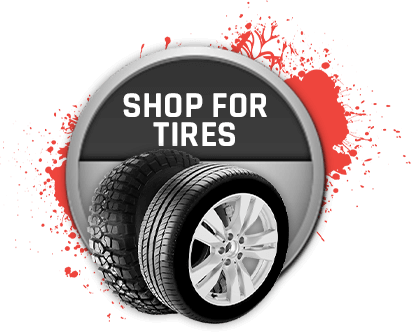Tire Service: The Effect of Weather
When it comes to making sure optimal performance and security on the roadway, understanding the influence of weather problems on tire solution is critical. In this conversation, we will explore the detailed relationship in between weather conditions and tire solution, losing light on the relevance of weather-specific tire upkeep techniques and factors to consider.
Warmth and Tire Performance
When subjected to heats, tires experience changes in performance that can substantially affect car safety and handling. The warm produced from extended driving or heat problems causes the tire rubber to soften, causing lowered tread life and enhanced wear. As the rubber becomes softer, the tire's grip when driving reduces, impacting stopping distances and general traction. In severe situations, too much heat can also create tire blowouts, posturing a serious security danger to the lorry and its occupants.
Additionally, high temperature levels can accelerate the process of tire aging, causing the rubber to wear away extra promptly. To mitigate the effects of warm on tire performance, vehicle drivers should routinely inspect their tire pressure, revolve tires to ensure even use, and examine for any signs of damages.
Winter Results
Cold weather problems can have a significant effect on tire performance and safety. As temperature levels decline, tire rubber can set, causing lowered grip on icy or snow-covered roads. In winter, tires might also lose air stress more rapidly, which can influence handling and gas performance. In addition, chilly temperature levels can cause tire sidewalls to tense, increasing the threat of damages from holes or other road hazards.
To minimize the results of winter on tires, it is important to on a regular basis check tire pressure and inflate them to the supplier's suggested degrees. Making use of winter months or all-season tires developed for chilly weather condition conditions can likewise improve traction and hold on icy or snowy roads - mopar tire service specials. Appropriate tire maintenance, including normal inspections for wear and damage, ends up being also much more vital throughout chillier months to make sure optimum efficiency and safety and security
Rainy Conditions Influence
Tires with worn-out footsteps are more prone to hydroplaning, where a layer of water builds up between the tire and the roadway surface, leading to loss of grip. To fight this, drivers ought to routinely evaluate their tires for sufficient walk depth and consider investing in tires specifically made for damp conditions.

Snow and Tire Safety
Snow-covered roadways present one-of-a-kind obstacles for drivers, emphasizing the importance of proper tire selection and upkeep. When driving in snowy conditions, having the best tires can make a considerable difference in safety and security and performance. Winter tires are made with unique rubber compounds and step patterns to Continue offer much better grip on snow and ice compared to all-season tires. The much deeper treads and sipes of winter months basics tires assist hold the road better, decreasing the threat of sliding and slipping.
Along with utilizing wintertime tires, it is important to ensure they are correctly blown up. Cold weather can trigger tire stress to go down, affecting traction and handling (tires morris il). Consistently examining and keeping the correct tire pressure is necessary for optimum efficiency in snowy conditions

Weather-Related Tire Upkeep
Weather-related tire upkeep incorporates an array of practices intended at guaranteeing ideal tire feature and longevity in various climate circumstances. One vital facet of weather-related tire upkeep is tire pressure regulation. Inspecting tire tread regularly and changing tires when step wear reaches a particular deepness is crucial for maintaining traction and security in unfavorable weather condition.
Final Thought
Finally, weather condition conditions have a substantial influence on tire efficiency and safety and security. From heat influencing tire stress Learn More Here and wear to winter reducing traction, it is vital to take into consideration the climate when maintaining and utilizing tires. Rainy conditions can reduce grasp and bring about hydroplaning, while snow can boost the danger of crashes if tires are not properly equipped. Weather-related tire upkeep is essential in guaranteeing optimal efficiency and safety and security on the roads.
In this conversation, we will check out the detailed connection between climate problems and tire solution, losing light on the importance of weather-specific tire upkeep techniques and considerations.
